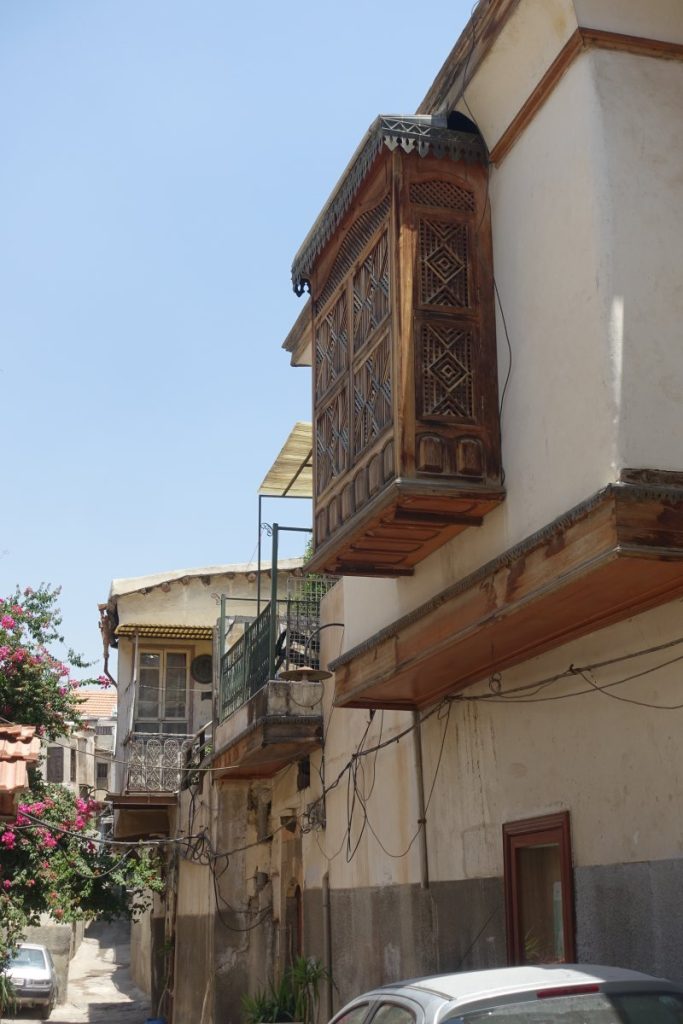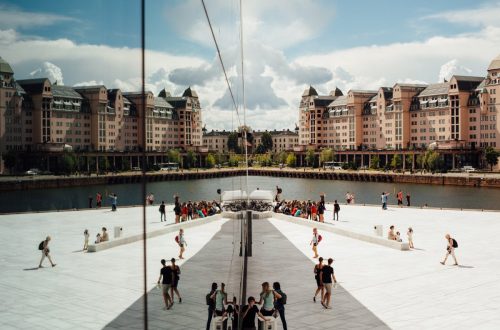
The BEST Things to do in Damascus, Syria (Updated 2024)
Damascus, Syria, had been at the top of my bucket list for a long time. And why wouldn’t it be? From its rich historical sites to its bustling markets and warm-hearted locals, there are many things to do in Damascus that promise an unforgettable experience.
After visiting this lovely city, I can safely say that it was one of the best decisions I have made in my life. In this guide, you will find everything you need to know about exploring the enchanting capital of Syria.
If you want more to be persuaded to travel to Syria, you should read my guide with 25+ compelling reasons to Visit Syria in 2024.
Traveling to Syria in 2024
If you haven’t done so, check out my piece on traveling to Syria. This Guide has everything you need to know before visiting this majestic Middle Eastern country!
A Little Bit of History
Before we dive into the best things to do in Damascus, let’s learn a bit about the city’s history. The capital of Syria has a rich, thousands of years old, history. Founded in the 3rd millennium BCE, it has been ruled by numerous big empires, including the Arameans, Assyrians, Persians, Greeks, Romans, Byzantines, and Arabs.
Damascus was a significant part of the ancient Silk Road, enabling trade and cultural exchanges between East and West. Over the centuries, it continued to evolve under various dynasties and rulers, each leaving its mark on the city’s architecture and culture.
Today, Damascus remains a living testament to its remarkable historical legacy despite the challenges posed by modern times and recent conflicts.
Is Damascus the Oldest City in the World?
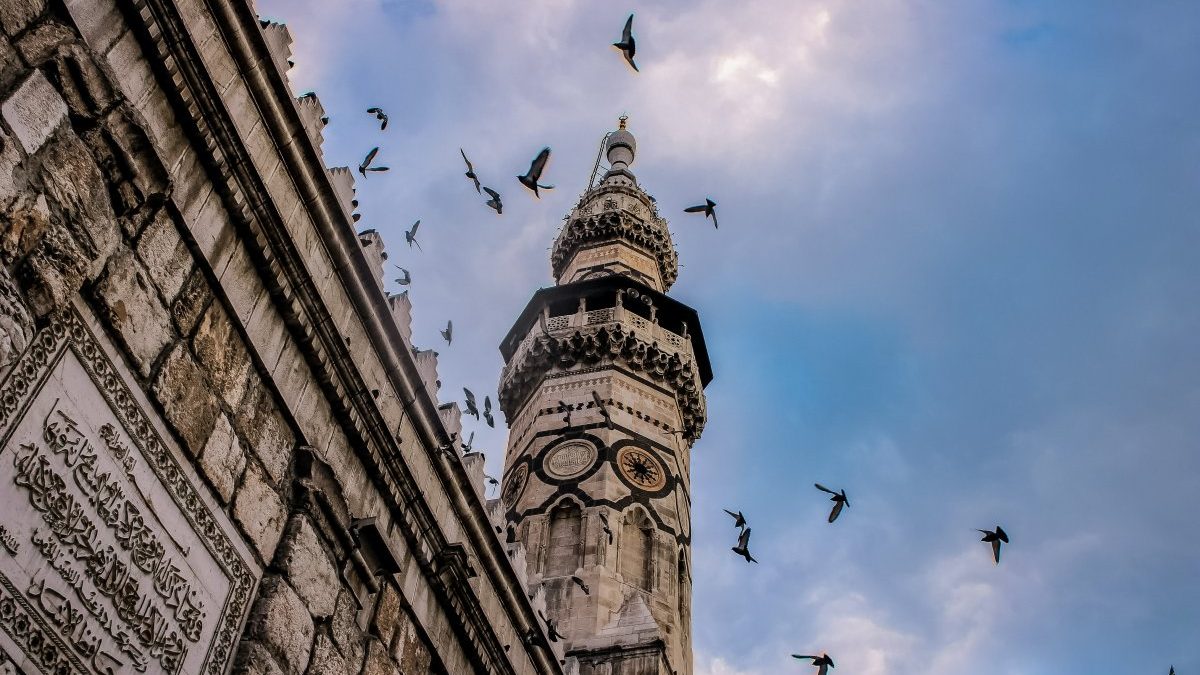
This is actually a very common question. Truth is, Damascus is one of the oldest continuously inhabited cities on Earth, but it is not the oldest one.
While the exact age of Damascus is a subject of historical debate, it is widely believed to have been settled for over 4,000 years, indeed making it one of the oldest cities with a continuous history of habitation.
However, while Damascus is a strong contender, there are other cities like Jericho in the West Bank and Byblos in Lebanon that also lay claim to this title. The age of these cities is often determined by archaeological evidence, historical records, and the continuity of settlement over thousands of years.
While it might not be the single oldest city in the world, Damascus remains among the most ancient and historically significant ones. And this just doesn’t change by a single date.
Is It Possible To Visit Damascus in 2024?
To answer this very popular question quickly, it is possible to visit Damascus. But let’s get more into it.
In the last few years, Syria has opened its borders to foreign visitors. In fact, in 2023, more than 1 million foreign visitors and 1.2 million Syrians from abroad chose the Middle Eastern country for their vacation. This was also the first year the country welcomed American tourists.
Americans had been banned from traveling to Syria for the past years, but that’s not the case anymore. US citizens can now easily and safely visit the country as tourists.
As I wrote in my other article on traveling to Syria (you should definitely give it a read!), since 2018, it is mandatory to organize your trip to Syria with a local tour operator.
We chose to organize our trip with Golden Team Syria, one of the most reputable travel agencies in the country. They took care of everything for us before we arrived. They were excellent professionals who tried their best to fulfill every request that we had.
A driver and guide were solely assigned to our trip, but they eventually became our friends. Sally and Abo Azad, if you are reading this, thank you for making this trip unforgettable.
I would definitely choose Golden Team again next time I’ll be traveling to Syria, and I would highly recommend them to anyone considering visiting the country.
You can find more information on their website. The only things you need to do are to tell them the places you would like to visit, the days you have available and your budget, and they will try to make the best itinerary possible.
Is It Safe to Visit Damascus?
This is one of the most common questions I got asked from everyone who knew about my trip to Syria. Even I was a little anxious before arriving. However, I couldn’t have been more wrong. But let’s get into it.
Damascus was the least affected city during the war. While there had been some conflict, it was mainly on the outskirts of the city. The historical center itself has been out of the fighting for a long time, and little to no signs of destruction can be found around.
During my entire stay in Damascus, I felt as safe as anywhere else I’ve been to. It felt no different from any other major Middle Eastern city, and that was a major relief.
One of the first things that has to come to your mind when planning a trip is insurance.
Safetywing’s Nomad Insurance is one of the best options available out there. With a maximum coverage of 365 days, they are a great option whether you are a Nomad or not! They offer very low rates, but excellent coverage and immediate support (in a few minutes!). The best part? Nomad Insurance can be purchased even if you have left your home country already.
Lastly, they also cover extreme sports, something that can come in very handy if you are an adventurous soul.
*Please note that Nomad Insurance does not cover travel to Syria. However, they are an excellent option for the rest of your trips.
As long as you are with your guide and listen to what they advise you, you‘ll be alright. While entering the city, you will pass many checkpoints and see many soldiers around, but they are there to protect you. We were always greeted with a smile and a warm “Welcome”, and they didn’t feel at all intimidating.
Obviously, I cannot guarantee anyone’s safety when traveling to Damascus or generally in Syria, and you always travel at your own risk. However, I can say that there was no place in the city where I felt insecure, even a tiny bit. So, you’ll safely enjoy the best things to do in Damascus!
When is the Best Time to Visit Damascus?
The absolute ideal time to explore Damascus is during the spring months of March to June. The weather is pleasant, with average temperatures hovering around the mid-20s (°C), making it a more than comfortable time to sightsee or enjoy outdoor activities.
However, let’s not discount the autumn months of September to November. The extreme heat of the Middle Eastern summer begins to ease off, leading to comfortable weather with temperatures often ranging between 15 to 25°C.
Remember to avoid visiting in the peak summer months of July and August if you cannot handle the heat. The desert climate sends temperatures soaring into the high 30s, even touching 40°C sometimes. If you’re not used to such heat, sightseeing can become somewhat uncomfortable.
Lastly, Winter in Damascus can get quite chilly, with temperatures dipping to single digits, especially at night. While the city rarely sees snowfall, the cold can indeed be biting.
How to Get to Damascus
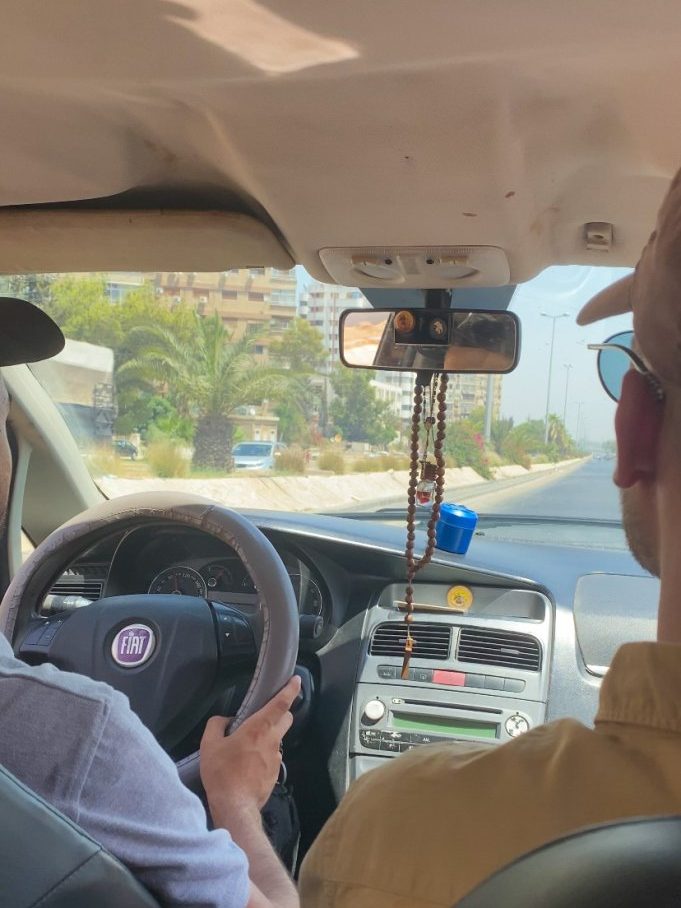
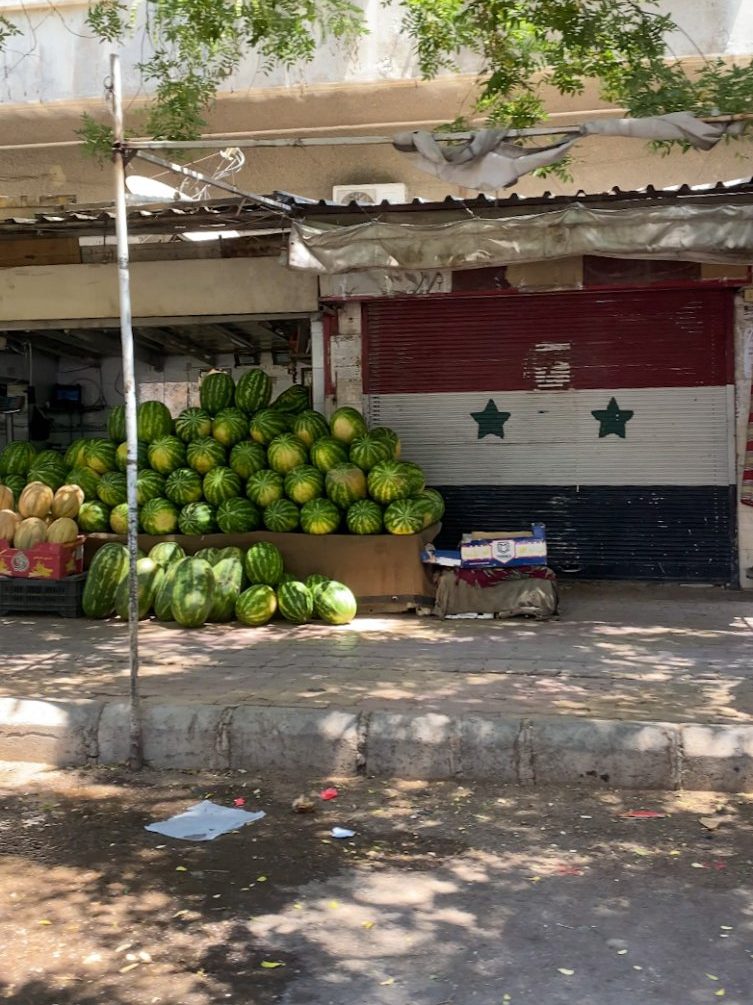
Most European countries have yet to resume direct commercial flights to Damascus. However, we were surprised to find out that there was a direct flight from Athens the same day we were traveling. It was something very interesting (and a bit shocking, but in a good way) to see before boarding our own flight to Beirut.
The most common way people visit Damascus is through Beirut, Lebanon. Once your flight arrives in Beirut, you’ll be greeted by a driver (arranged by the local tour operator of your choice) who will take you to the Lebanon-Syria border. The trip to the border lasts around one hour and a half, but it can take longer, depending on the traffic.
Once at the border, you will pass through customs on both the Lebanese and Syrian sides. This process is very easy and straightforward. You do not have to do anything; your driver will do the talking and take care of the procedure.
Once you pay the visa fee on the Syrian side and your passport gets stamped, another driver will be waiting for you to take you to Damascus. It should take around 45 minutes to arrive at the capital city of Syria.
Again, this whole procedure can take some time, depending on how many people are waiting to enter Syria and the traffic. However, as a general rule, the entire journey can take anywhere between 2.5 and 4 hours.
Is Damascus Expensive?
Damascus and Syria, in general, are actually very affordable to visit. It is definitely the cheapest country I have been to so far. A full traditional meal for 3-4 people at a middle-to-high-end restaurant will set you back around $15- $20 in total. A sandwich will cost around $1-2, and a soda will cost $1, tops.
Small souvenirs, like keychains, etc., cost around $0.5 per piece. As you can see, traveling to Syria on a budget can be very easy, and you’ll be able to enjoy the best things to do in Damascus without a hustle.
However, there are more expensive and high-end options if you like luxury and more expensive stuff.
Where to Stay in Damascus
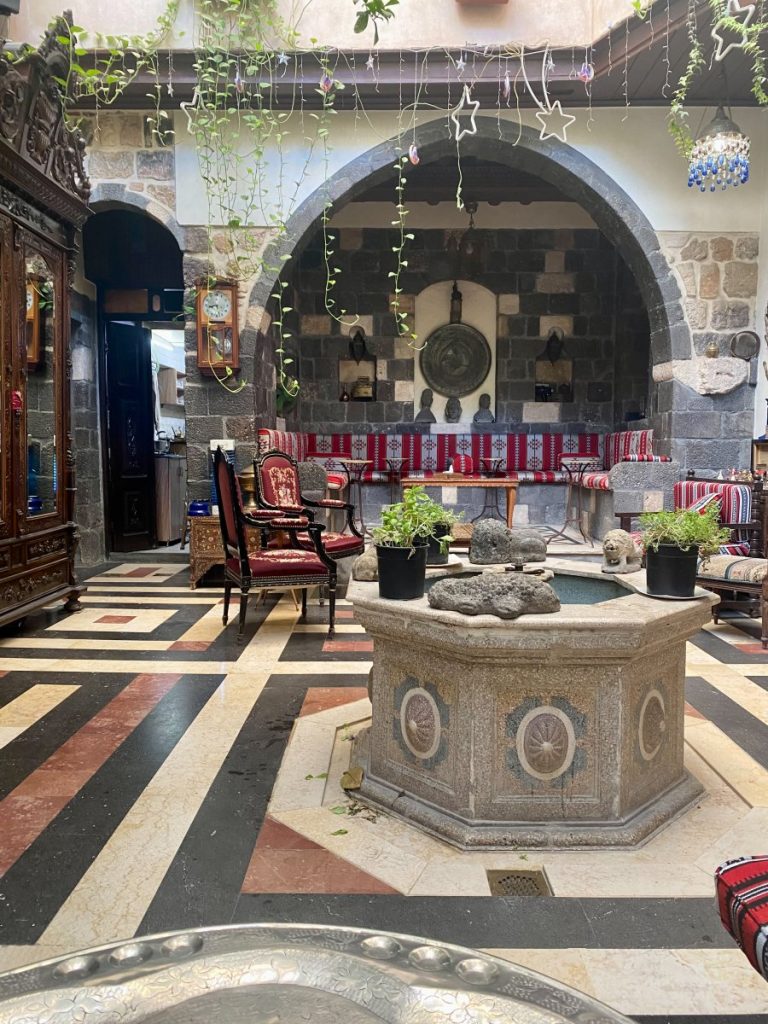
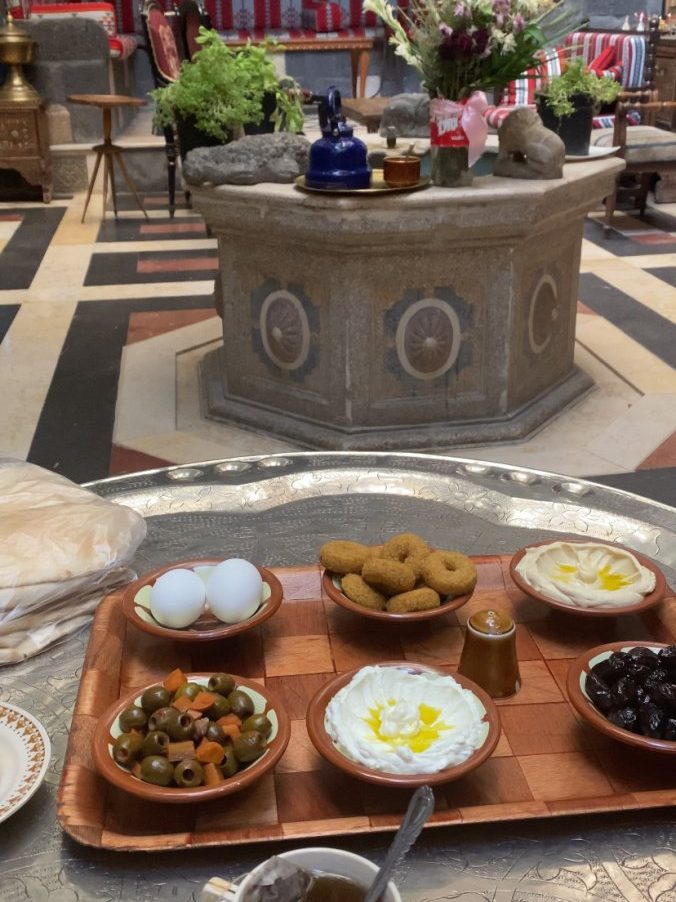
Before we get into the things to do in Damascus, let’s talk about hotels. There are many great hotel choices in Damascus. From old houses that have been renovated to 5-star hotels, there are options for every budget and taste.
The likeliest scenario is that your tour operator will pick the hotel for you, depending on your preferences. However, I do have a suggestion.
We stayed in the Antique Khan Hotel near the old town. The hotel’s interior was cozy and traditional, while the rooms were big, comfortable, and had everything we could have asked for (yes, that includes air conditioning).
The highlight for me was their breakfast. It included a traditional Middle-Eastern feast which was delicious! It was so good, that I would start thinking of it the night before!
What are some common phrases to know when traveling to Damascus?
When visiting Damascus, it’s always a good idea to be aware of a few essential Arabic phrases. Trust me, it will make your communication flow with locals much smoother. Arabic is a rich language, but don’t worry; I’m here to guide you through some key phrases:
- “Marhaba”: Used for both “hello” and “hi”, it’s a phrase you’re likely to use frequently.
- “Min fadlak” (for men) / “Min fadlik” (for women): This phrase translates to “please”, a universal sign of politeness.
- “Shukran”: A way to express “thank you”, an essential for any traveler.
- “Aiwa” / “La”: These simple words stand for “yes” and “no”, respectively.
- “Darak”: Not an uncommon phrase to use when asking for directions, it means “your road”.
- “Al Hammam”: Literally, “the bathroom” – because, let’s face it, you’ll need to know this one.
Of course, you are not expected to become fluent overnight. The Syrian people are known for their warmth and hospitality, and they’ll surely appreciate your efforts to communicate in their language.
Lastly, don’t be shy; use language-learning apps or carry a phrasebook with you. Remember, the goal is not perfection but connection.
What are the best souvenirs to bring back from Damascus?
Traveling to Damascus is not something that you do many times in a lifetime. That’s why you need to get a few souvenirs to remember this amazing trip or show your appreciation to your loved ones. Here are some things that you might want to bring back:
Damascene Crafts: Syrians are very popular for their crafting skills. Look out for carved mosaic boxes, silverware, and embroidered table linens. Each of these items will undoubtedly add a touch of Syrian beauty to your home.
Local Spices: Syrian cuisine is renowned for its rich flavors, largely thanks to the spices used in its recipes. Consider purchasing za’atar, a popular Levantine spice blend, or sumac, known for its tartness and deep red hue. Packing a selection of these aromatic seasonings will allow you to recreate traditional dishes at home and transport you back to the colorful food markets of Damascus with each meal.
Handmade Soaps: While it is Aleppo that is known for its handmade olive oil soaps, you will find plenty in Damascus. They smell amazing and are very good for your skin. Believe me, they are well worth it!
Syrian Sweets and Delicacies: If you have a sweet tooth, don’t miss the delicious selection of Syrian sweets. Candied nuts, date-filled cookies, and the renowned baklava are especially popular. If you find a good way to pack them for home, they can be a very tasty thing to bring back.
The Best Things to Do in Damascus
1. Explore the Majestic Damascus Old Town
As I have already mentioned in this guide, the Old Town of Damascus is one of the world’s oldest continually inhabited areas. With a history of over 4,000 years, it has been listed as a UNESCO World Heritage Site in its entirety! But now, let’s get to how it is organized.
The town consists of many big, parallel streets connected by smaller alleys between them. The most famous is the “Straight Street”.
The Straight Street dates back to Roman times and is believed to have been constructed during the 1st century AD. It is approximately 1,500 meters long and stretches from the Eastern Gate of the Old City to the Umayyad Mosque in the west. It runs in a straight line from east to west, which is how it got its name.
Straight Street’s architecture is mainly influenced by Roman, Byzantine, and Islamic styles. Alongside the (many) Roman and Greek ruins, you will also find many local shops selling anything from antiques to crafts and souvenirs.
Every street, corner, and little detail of the Old Town of Damascus has a story to tell. There are countless things to do there, and I could literally spend hours wandering around, checking out shops, old houses, and street food vendors.
2. Enjoy Local Delicacies at the Street Food Street
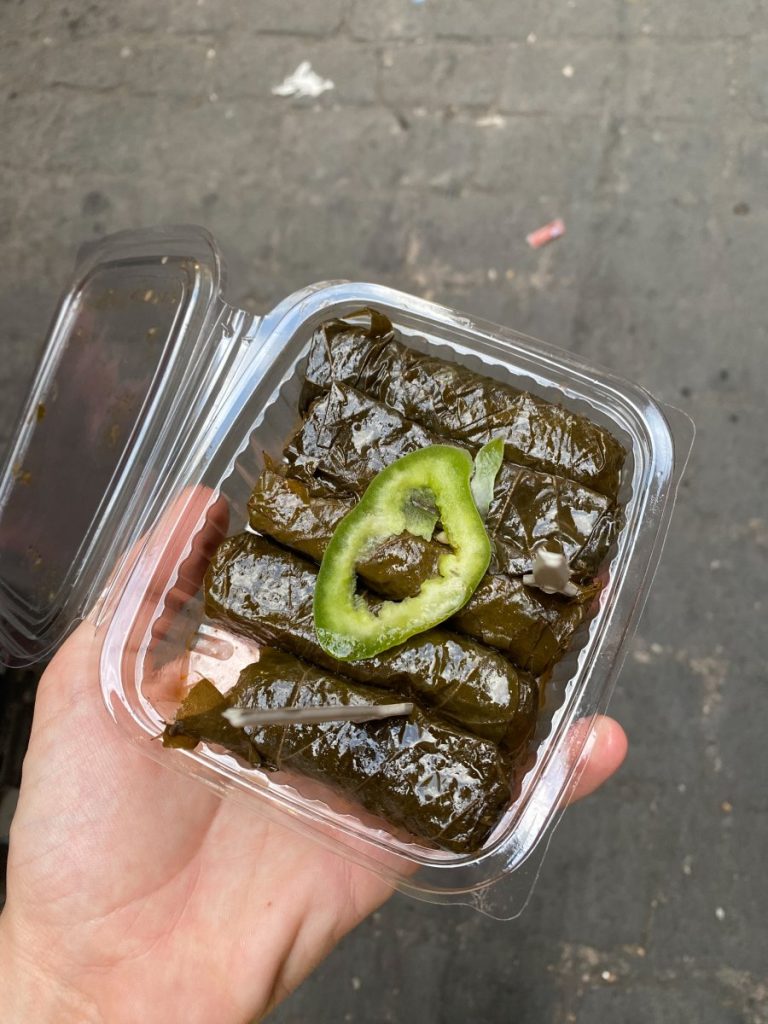
In Damascus, the “Street Food Street” is a must-visit for street food lovers. This bustling place is lined with vendors offering Middle Eastern favorites like shawarma, falafel, and dolma, as well as delicious sweets like baklava and knafeh.
It’s a very popular hub and the most authentic place to capture the essence of Syrian cuisine and culture. The smells are amazing, and I wanted to try literally everything. If you love good food, this will be one of your favorite things to do in Damascus!
3. Wander, relax, and shop at the Al-Hamidiyah Souq
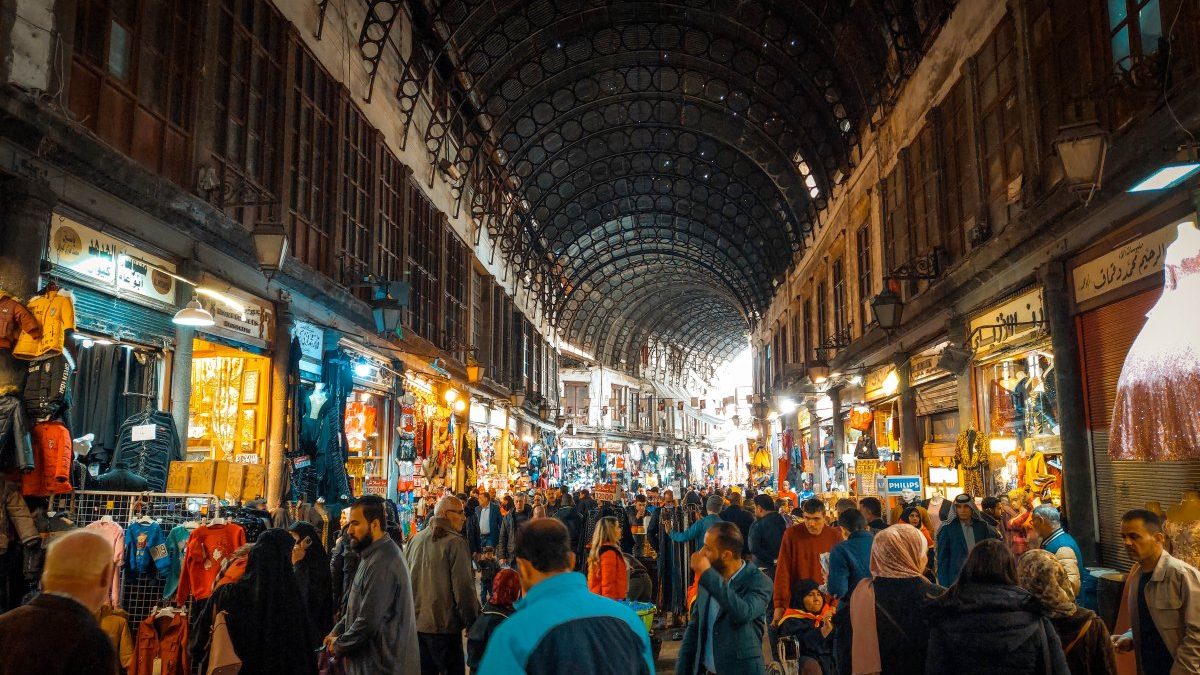
Before we move, take a moment to imagine walking through a market where people have been selling and purchasing goods for centuries. The Al-Hamidiyah Souq is like a time machine, a place where traditional charm meets centuries-old architecture.
During your time there, you will pass through hundreds of shops and vendors selling literally everything, from clothes and spices to jewelry and handicrafts. It may be the best place to get souvenirs, too!
The souk is always buzzing with people, and the vibes are as traditional as they can get! I cannot even count the things I got from there, and I do not regret it one bit. The best thing? Some of the most iconic things to do in Damascus are located nearby!
Lastly, don’t forget to stop at the Ruins of the Jupiter Temple, right outside the Umayyad Mosque. They are located right at the entrance of the souk and are just stunning to see!
4. Have an Ice Cream at Bakdash
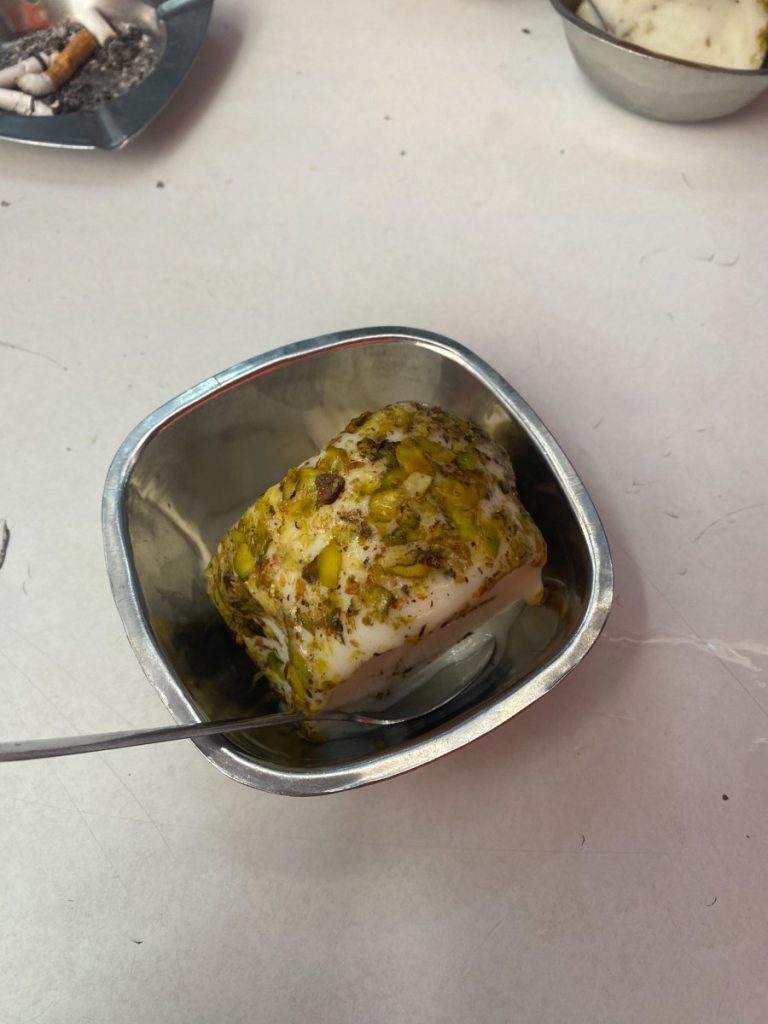
Attention ice cream lovers, this one is for you! Bakdash is a famous ice cream shop in the Al-Hamidiyah Souq. Established in 1895, it is known for serving some of the most delicious and traditional Syrian ice cream.
What sets Bagdash ice cream apart is its unique texture, achieved by using mastic (an extract from the mastic tree) and sahlab, a flour made from the roots of the plant orchid. These ingredients give the ice cream a distinct chewy quality, very different from the typical creamy texture you are familiar with.
The most popular flavor is the “Arabic ice cream,” served with pistachios and sweet syrup.
Bagdash is a very historic and charming shop, loved by literally everyone. In fact, it is so famous and loved that, during the war, another branch was built in Amman to serve Syrian refugees!
I can safely say that it ranks among the best ice creams I have ever had and is surely one of the tastiest things to do in Damascus!
In fact, I loved it so much that I asked our guide to go there a second time, just right before leaving Syria! I desperately wanted to enjoy it one last time before leaving.
5. Visit the Azem palace
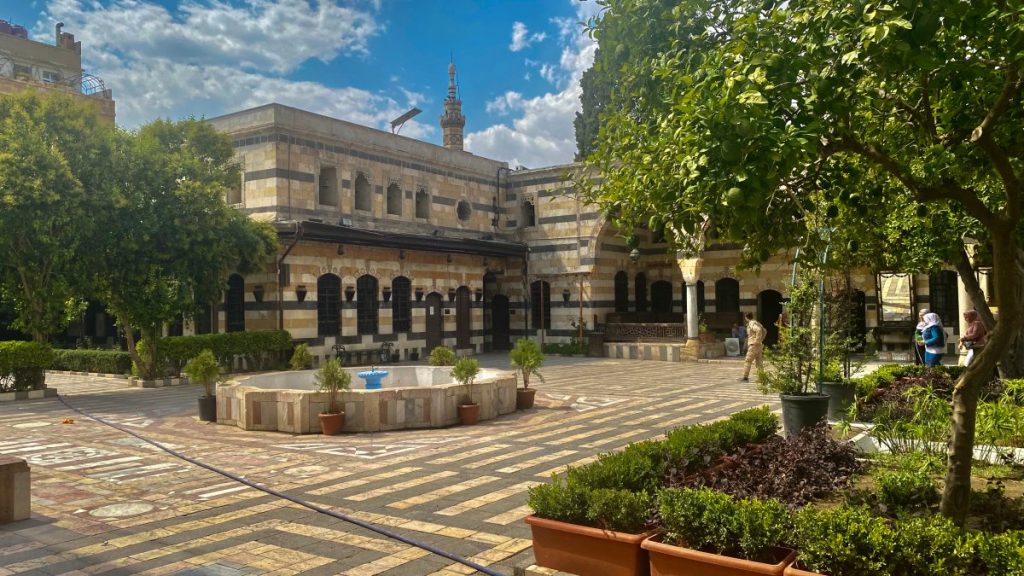
The Azem Palace is a historic complex in the center of Damascus. It was built in the 18th century by As’ad Pasha al-Azem, the Governor of Damascus and an essential leader in the region at the time.
It was the home of the Governor, as well as a place where the elite would gather and spend their time. The palace was divided into two parts, one for men and one for women. Both have now been turned into museums with exhibits that showcase how life was back in the Ottoman period.
The palace is a beautiful example of Ottoman architecture. It is now also a social hub for locals, with many families gathering there to spend their afternoons. The vibes there are amazing, and feelings of calmness and serenity were everywhere.
6. Take a stop at the Khan As’ad Pasha
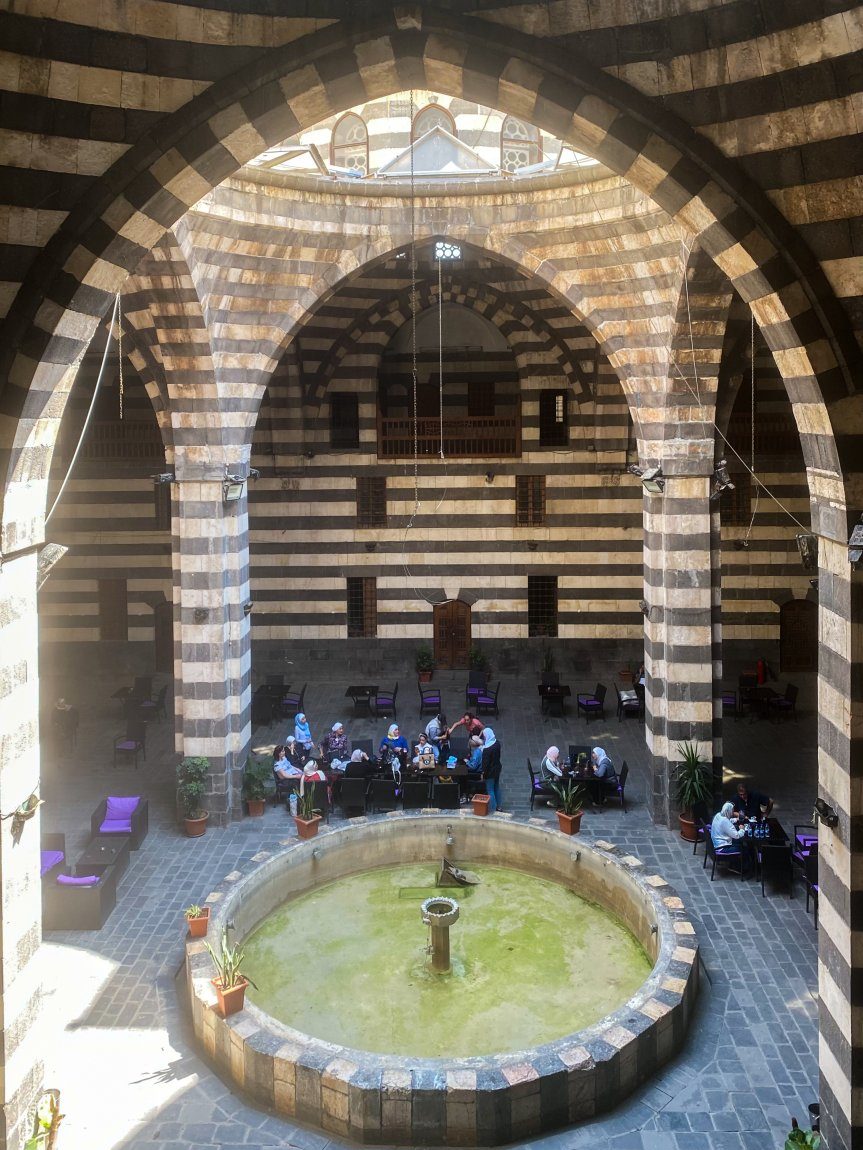
Khan As’ad Pasha is another important building in the old city. It was also built in the 18th century by As’ad Pasha al-Azem.
It served as a popular trading hub during the Ottoman period, where travelers and merchants would rest and do business before continuing their journey through the Silk Road.
The Khan is famous for its elegant architecture, lovely courtyard, mosaic decorations, and grand rooms. The distinct black and white marble, a symbol of Ottoman architecture, is just beautiful to see.
Today, Khan As’ad Pasha serves as both a museum and a social gathering place. It was amazing how many local families were gathered in the courtyard to enjoy their coffee or a refreshing beverage.
7. Explore the Stunning Umayyad Mosque
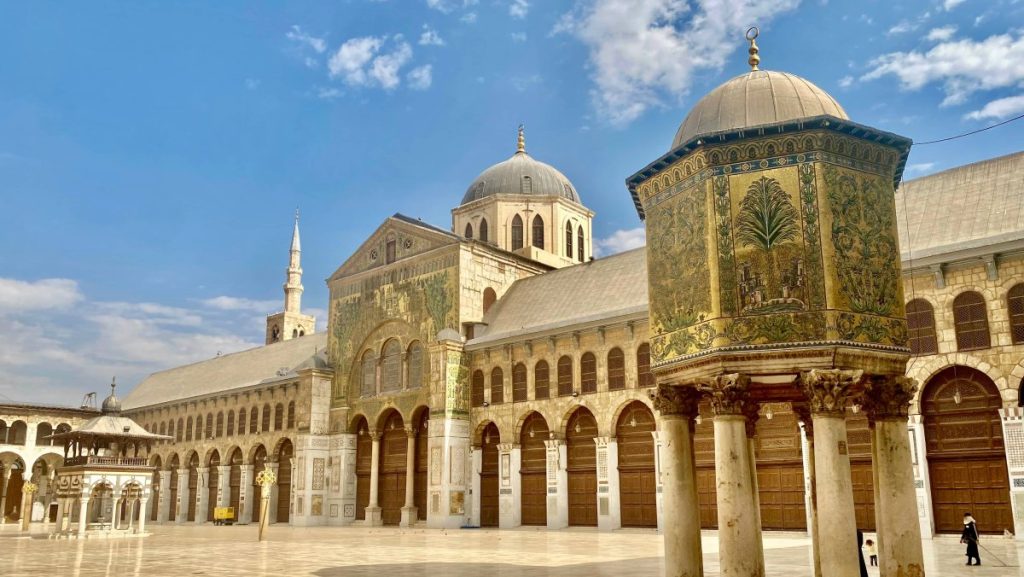
Now that I think about it, I should have started with this one. The Umayyad Mosque is a stunning sight in the heart of Damascus and one of the most beautiful places I have ever been.
It was built in the 8th century and is one of the world’s oldest and most important mosques (It is actually considered to be the 4th holiest place in Islam). Muslim tradition believes that the Umayyad Mosque is the place where Jesus Christ will return after the end of days.
During my time there, I was utterly fascinated by the countless golden mosaics that decorate the walls. To put it mildly, the exterior is majestic. The courtyard is massive, but you are not allowed to be in the center. While there were some signs of damage from the war, most of them had already been restored.
Inside the building, there’s a massive prayer area where locals gather to sit together and pray. The space is very big, but it can be packed with people during Islamic holidays such as Ramadan.
The Umayyad Mosque made me very emotional, as I had never seen beauty of this kind again. For me, it is by itself a good reason to put Damascus on top of your bucket list.
8. Visit The mausoleum of Salah al-Din
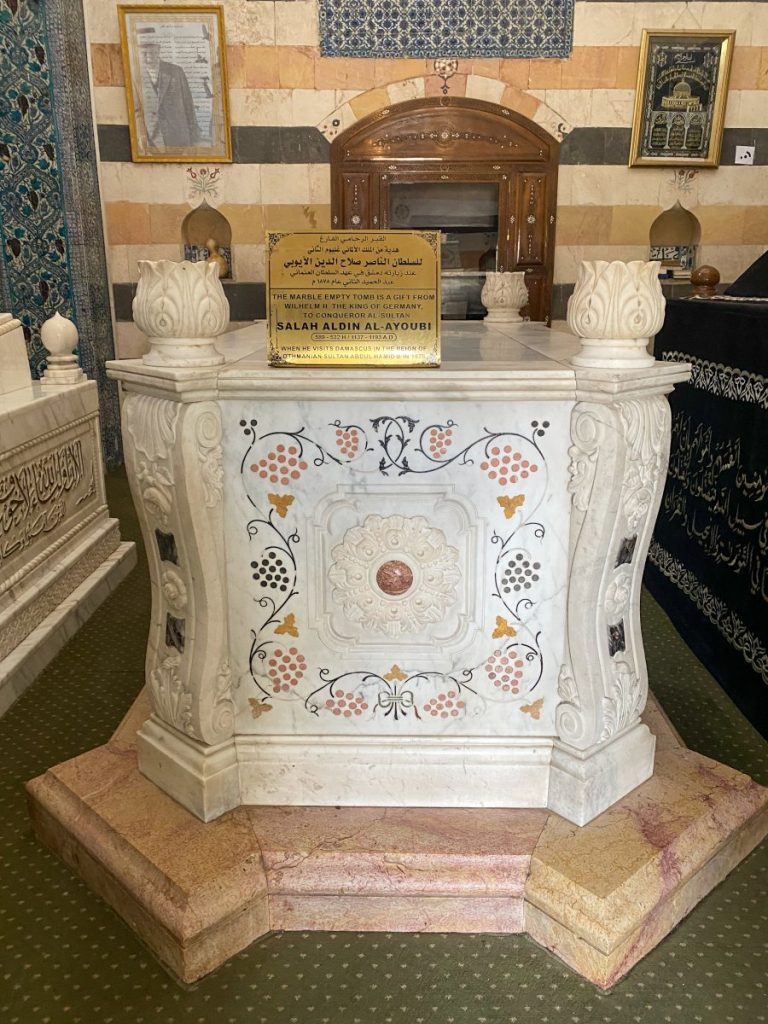
Salah al-Din was a very popular leader in the 12th century. He is best known for leading Muslim forces during the Crusades, a series of wars between Christians and Muslims. Saladin is mainly remembered for recapturing Jerusalem from the Crusaders in 1187.
He was known for his bravery and fair treatment of his enemies, and he ruled over a large area that included Egypt and parts of Syria.
Saladin is admired for his efforts to unite Muslims and for his impact on Islamic culture and history. His story is still well-known today and has been featured in books and movies. His mausoleum is located inside the Umayyad Mosque complex.
When you visit the mausoleum, you’ll find Saladin’s tomb in a beautifully decorated room with Islamic art. It’s a peaceful spot, and a quiet place for people to remember and respect this important historical figure.
9. See the St. John the Baptist tomb
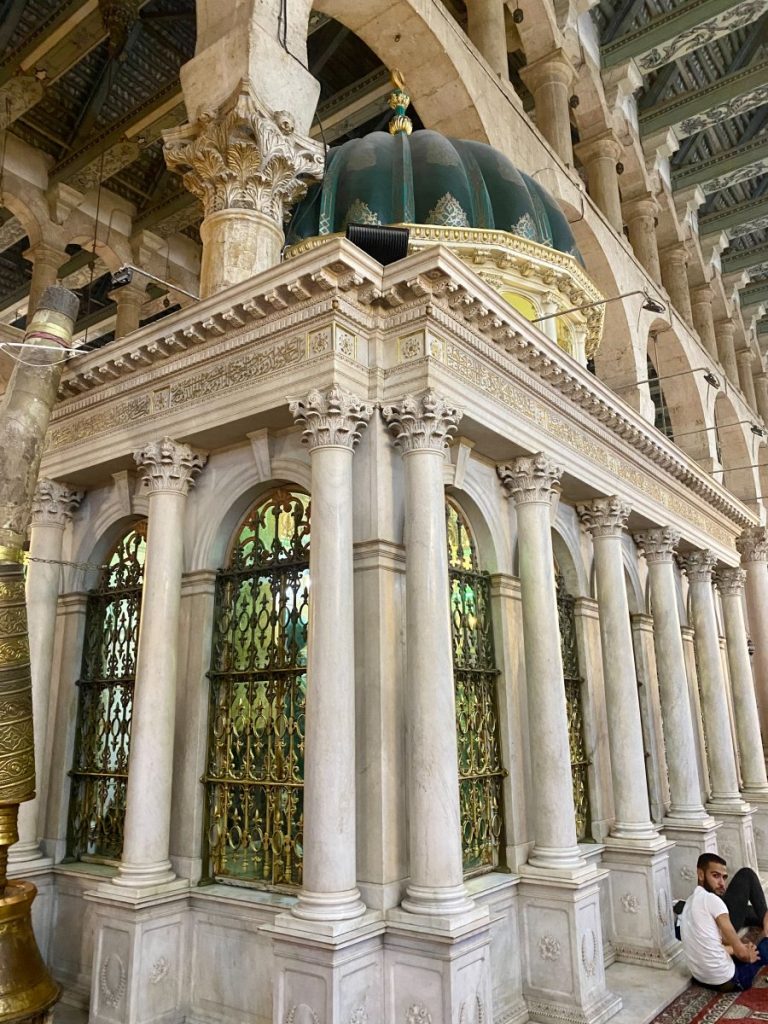
To be completely honest, before traveling to Syria, I was unaware that the tomb of John the Baptist (The man who, according to Christian tradition, Baptized Jesus) was located inside the Umayyad Mosque.
While many sites have been proclaimed for St. John’s burial, the Umayyad Mosque is believed to be the one. The tomb is located in an impressive marble structure inside the praying area.
This place made me think a lot. I could not hide my fascination with the fact that a massive mosque, the tomb of a vital Christian figure, and a Roman temple all existed in the same complex. Maybe we are not as divided as we think we are.
10. Dive Into Syrian history at the National Museum
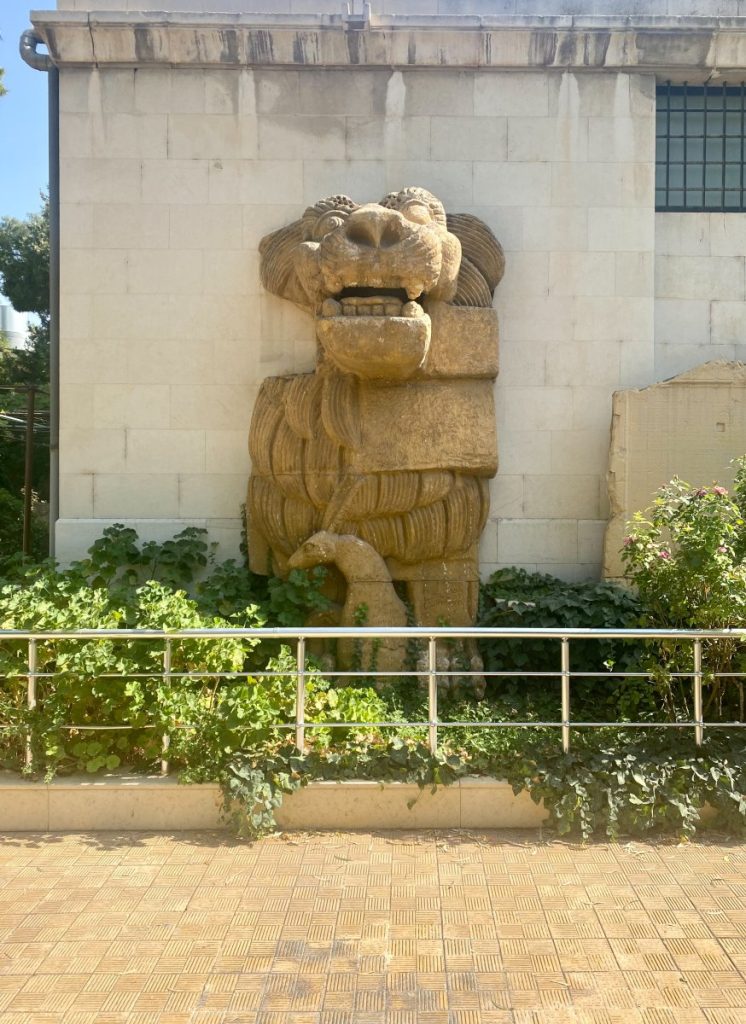
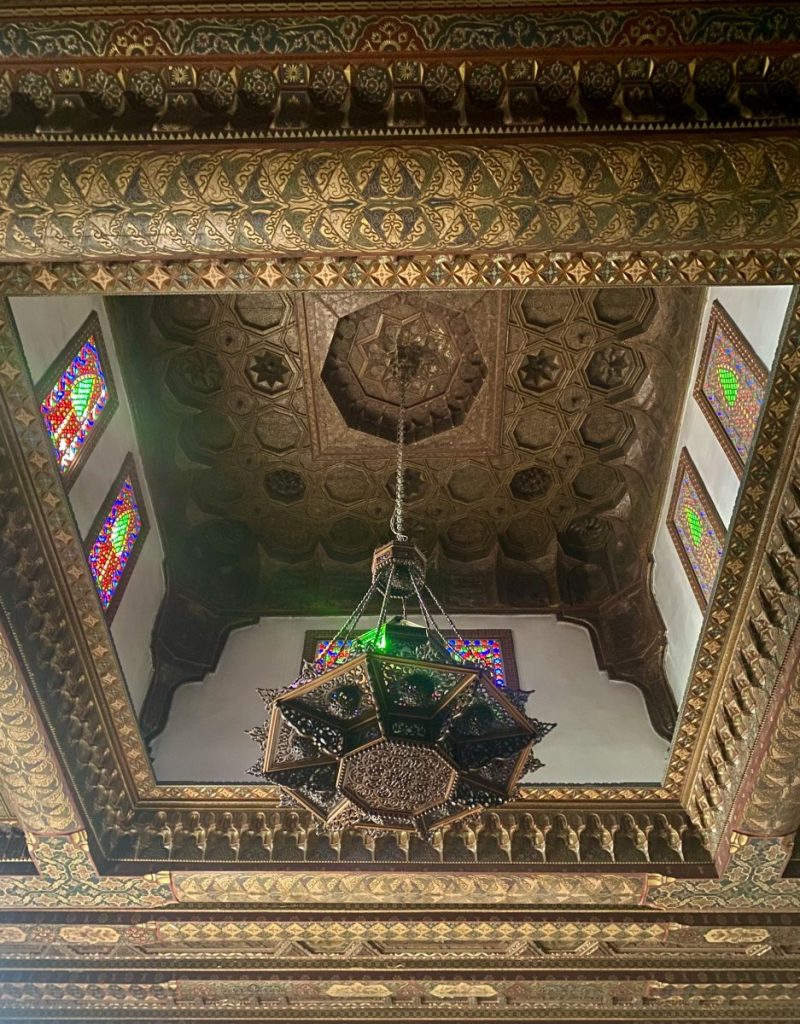
This one is another personal favorite, as it managed to defy all expectations. The National Museum of Damascus features a great collection of artifacts from every place and historical period of Syria.
Established in 1919, the museum is the oldest cultural heritage institution in Syria. Among the museum’s many highlights, my favorites are the tombs, sculptures, and textiles from Palmyra. An entire set of tombs was taken and relocated to the basement of the museum to be protected, and it was very impressive to see.
The museum space inside is very modern and well-preserved. Every historical era has its own room filled with artifacts and information to get to know Syrian history better. I found the explanations very detailed and helpful (and quite unexpected, to be brutally honest).
However, the exhibition is not only limited inside the museum. The courtyard outside is equally impressive, featuring sculptures and artifacts carefully placed inside a lovely garden.
I firmly believe that the National Museum of Damascus is a hidden gem and one of the best things to do in Damascus. I had an amazing time there and I would gladly visit it again next time.
11. Find About the Story of St. Paul at the St. Ananias church
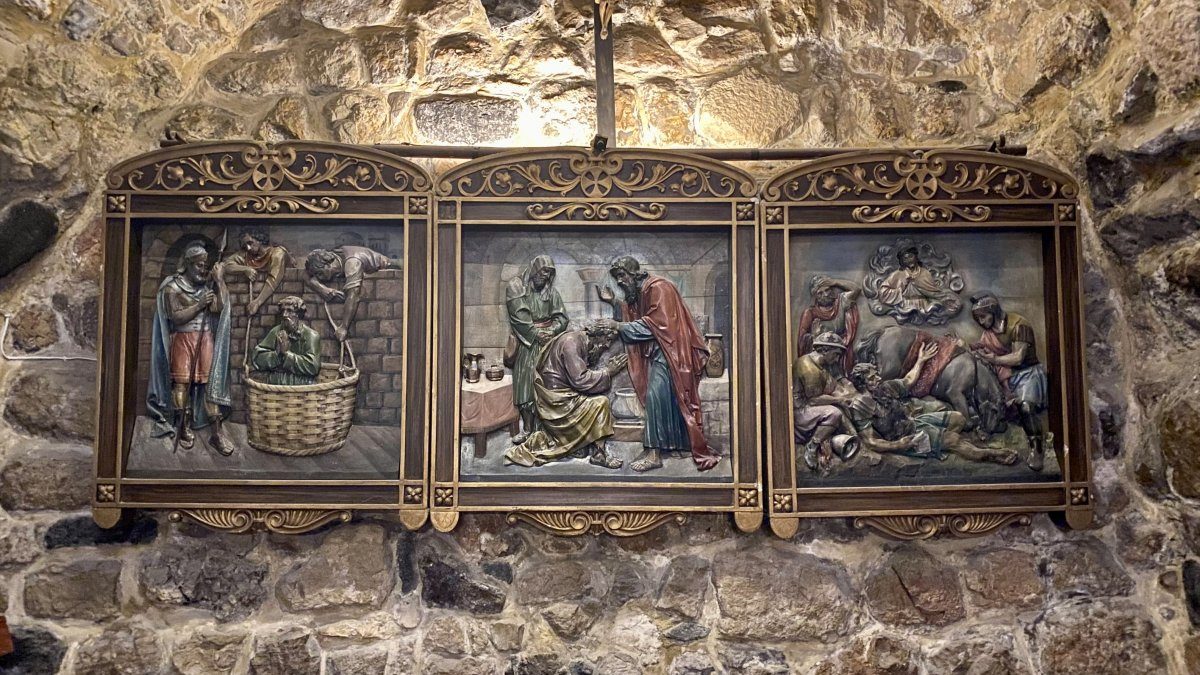
Did you know that the church where St. Paul was Baptized is located in the center of Damascus? Well, neither did I. The story of Saint Paul’s baptism is very interesting.
It is about a man named Saul who used to persecute Christians. One day, while traveling to Damascus, he saw a bright light and heard Jesus speak to him. This experience completely blinded him. On that day, a Christian named Ananias received a vision from God instructing him to find Saul and help him restore his sight. And that’s what he did.
Then, he baptized him, and Paul was his new name. However, because his actions angered the Romans, Paul had to rely on the help of Christian locals to escape the city.
His baptism marked the beginning of his new life as a Christian and his mission to share his new religion with others.
The church itself is mainly underground, which I found very impressivel. It was a lovely way to conclude our trip to Damascus.
12. Sit, Relax, And Have a Coffee at the Al Nawfara Coffee House
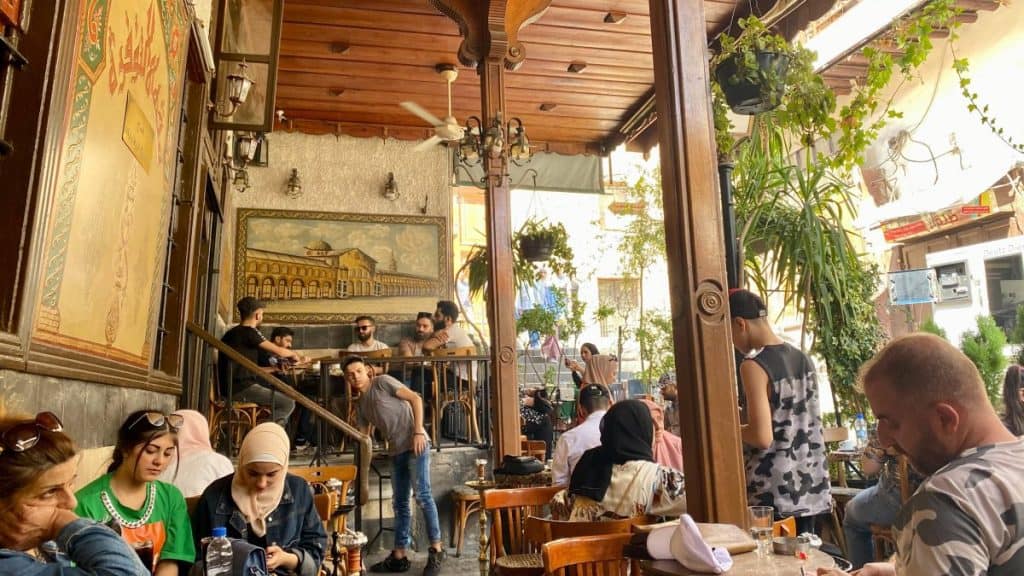
Al Nawfara Coffee House is one of Damascus’s most well-known and historic cafes. It is situated within the walls of the Old City, near the Umayyad Mosque.
It is also one of the places that keeps the tradition of the storyteller alive. The storyteller is a person who narrates tales, legends, and stories from history, folklore, or literature to the cafe guests. It is a unique traditional experience.
However, we did not get the chance to hear him, as he wasn’t present when we were in the café. Something for next time, that’s for sure!
The cafe’s interior and exterior decor make it a great place for those seeking a taste of authentic Syrian hospitality. Their coffee was very nice as well. If you enjoy slower-paced and traditional experiences, this one is among the best things for you to do in Damascus!
It felt very nice to see locals gather on a busy morning, hanging out with friends and enjoying their coffee. I guess it’s the simplest and most unexpected moments that make travel special.
13. Enjoy a Traditional Syrian Feast
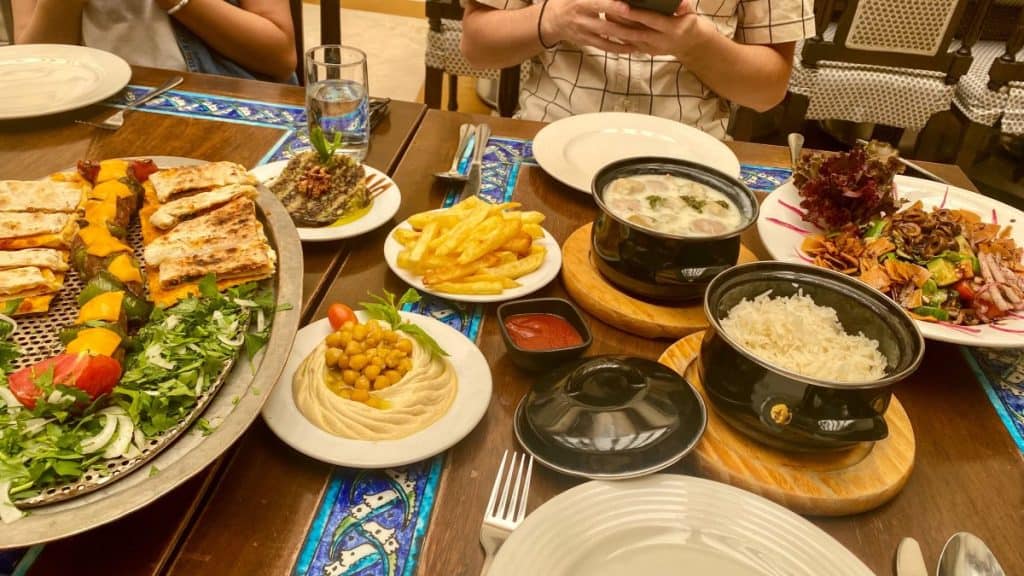
I am not kidding when I say that Syrian food is the best I’ve ever had while traveling. Syrian cuisine is similar to Lebanese, a harmonic blend of Middle Eastern and Mediterranean influences.
Syrian cuisine features fresh ingredients like olive oil, herbs, and spices, often combined with bulgur, rice, and grilled meats such as lamb and chicken. There is an excellent variety of traditional dishes you need to try, such as falafel, kebab, and kibbeh. Mezzes like hummus and tabbouleh are typical starters you will also appreciate.
During our time in Damascus, we had the chance to try two very famous restaurants, Darmisk and Mona Lisa.
Darmisk is one of the most famous (and beloved) restaurants in the old town. The interior was very charming, the service was excellent, and the food was from another planet! I highly recommend it to everyone who wants to have his first authentic Syrian food experience!
Mona Lisa restaurant was also charming and cozy, offering fresh and delicious food! While significantly more expensive than Darmisk, we had a great time there, so it would also be highly recommended. Their fried kibbeh was just unbelievable!
Eating would surely rank among my favorite things to do in Damascus!
14. Have a Drink at a Local Bar
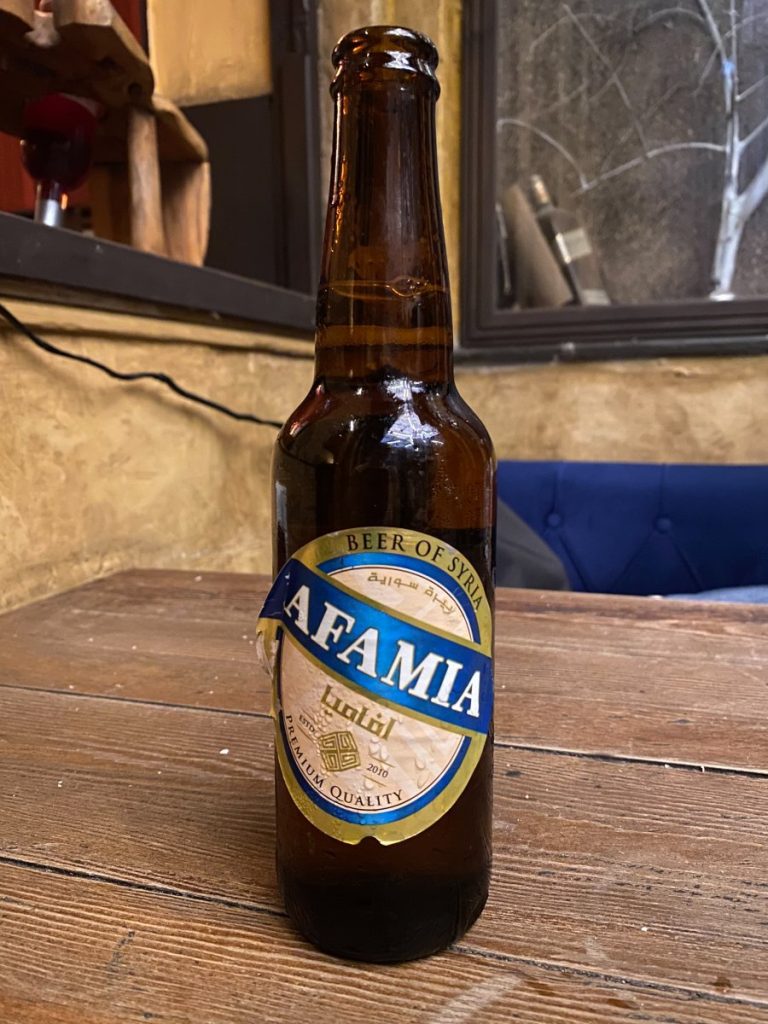
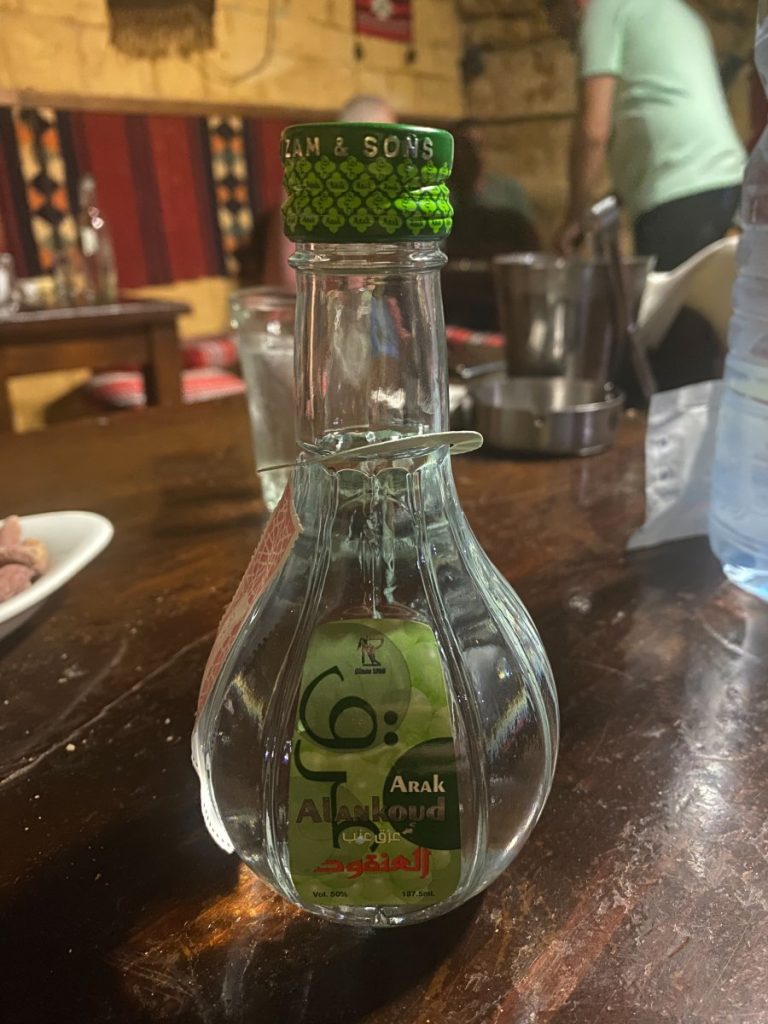
This might sound surprising for a Muslim country, but Syria has a lively and diverse drinking culture.
Influenced mainly by Syria’s Christian minority, Damascus is home to many bars and clubs, like the ones you would expect to find in Europe. These bars offer a relaxed atmosphere for socializing, making them a central part of Damascus’s nightlife scene.
Afamia, a beer produced in Syria, is surely one to be noticed! Local wines and arak (like the Greek ouzo) are also popular choices I’d suggest you try during your time in Syria.
What better way would be to conclude a full, exhausting day of exploring all the great things to do in Damascus than enjoying some local drinks in a cozy bar and relaxing with the new friends that you’ve made?
15. See the Damascus Sword Monument
The Damascene sword is a giant statue located on Umayyad Square, a large square connecting different parts of Damascus. Erected in 1986, it symbolizes the city’s historical and cultural heritage.
The monument itself is a large-scale representation of a sword, crafted from metal and standing at an impressive height of 24 meters (79 feet).
The sword is held upright, with the hilt at the top and the blade pointing downwards. This design is said to symbolize the peaceful nature of the Syrian people, as a sword in this position is typically seen as a sign of peace.
When you visit the monument, take your time to notice the intricate details on the sword, such as its Arabic inscriptions. These inscriptions are actually verses from the Quran. The monument is illuminated at night, making it a beautiful sight to behold.
16. Visit the Historic Hejaz Railway station
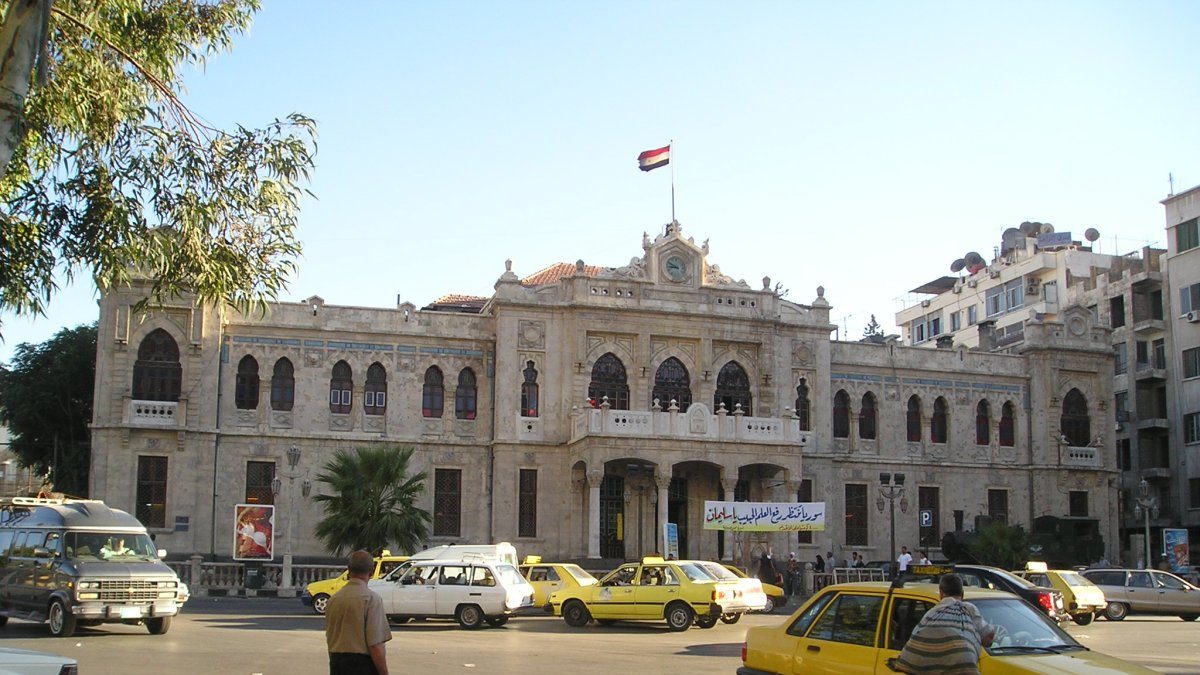
Visiting the Hejaz Railway station is a hidden gem to see when in Damascus. This historic station was part of the Hejaz Railway, a railway that ran from Damascus to Medina, Saudi Arabia. It was constructed between the end of the 19th century and the beginning of the 20th century during the Ottoman Empire.
The Hejaz Railway station is a significant historical site, as it was the northern terminus of this railway. The station is a beautiful example of Ottoman architecture, with its intricate designs and grand arches.
Today, the Hejaz Railway station serves as a museum, showcasing a collection of vintage trains, carriages, and other railway memorabilia. It’s a fascinating place for train enthusiasts, to say the least.
17. See the views from Mount Qassioum
Mount Qassioun is a mountain that overlooks the city from the northwest. It provides a panoramic view of the Syrian capital, making it a very popular spot in the city.
The mountain is believed to be the site where Cain slew Abel, according to the Bible. It is also said to be the place where the Prophet Muhammad saw a vision of the city of Damascus.
Getting to Mount Qassioun is relatively easy. It’s accessible by car, and there’s a road that leads to the top. The city lights of Damascus spread out below create a stunning spectacle. It’s a perfect spot for photography enthusiasts or anyone who wants to see the city from a different perspective.
18. Explore The October War Panorama
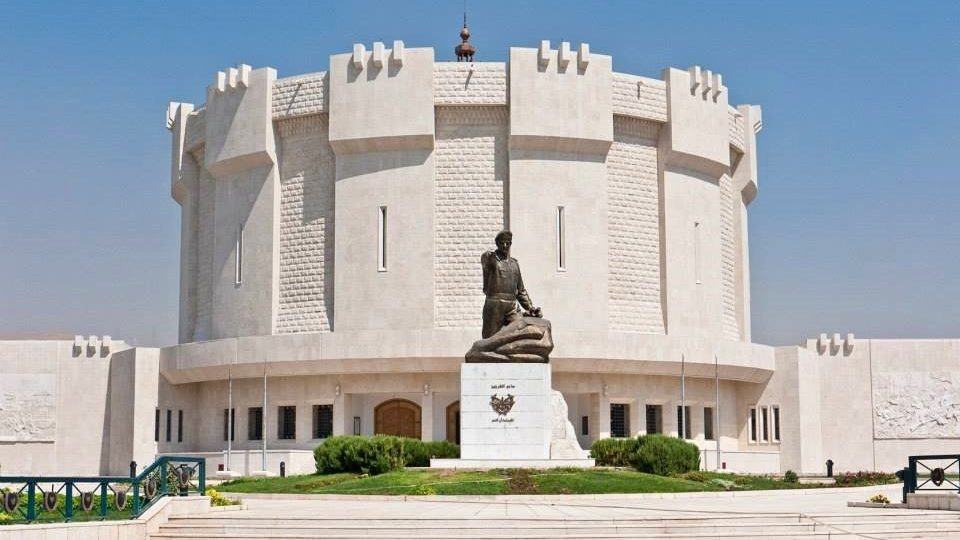
The October War Panorama is a massive museum and monument dedicated to the October War of 1973. The museum offers a comprehensive understanding of the war, its causes, and its outcomes.
The Panorama is a circular building with a large rotating platform in the middle. The platform moves slowly around a circular painting that is 15 meters high and 120 meters in circumference, depicting various scenes from the war.
The painting is a very interesting piece of art and history, created by a team of North Korean artists. It is one of the largest circular paintings in the world, and the level of detail is fascinating.
Alongside the painting, the Panorama also houses a collection of military equipment used in the war. This includes tanks, aircraft, and artillery pieces, many of which are displayed outdoors.
19. Visit the National Opera house
A visit to the National Opera House is another very interesting thing to do in Damascus. This modern structure is a complex that includes a drama theater, a multipurpose hall, a cinema, and a library. The architecture alone is worth the visit, blending modern design with traditional Arabic influences. I would classify it as another hidden gem of the city!
Final Thoughts
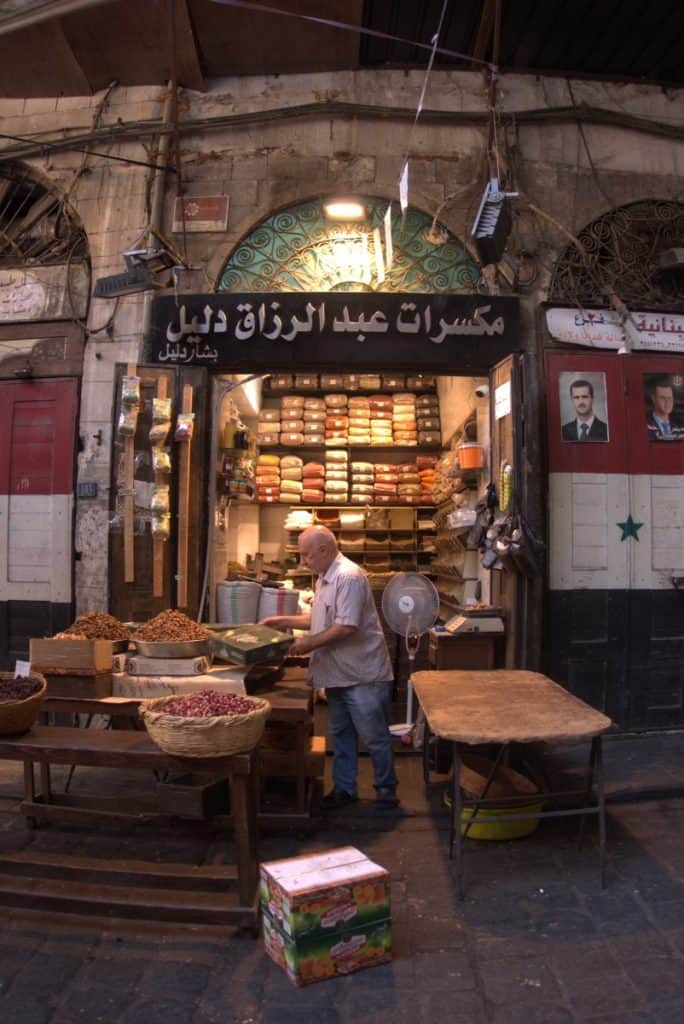
Visiting Damascus was a mind-opening experience for me. This ancient city, despite the tough times it has faced, still shines with its unique charm.
The stunning sites, the fantastic food, and the kindness of the people all contribute to a memorable experience. I can safely say that Damascus has a special place in my heart, and I can’t wait to visit again.
Before I conclude this guide, I’d like to say a massive thank you to my good friend, Elsa Nakhleh, for providing me with some fantastic photos. Elsa is a Syrian Tour Guide and Operator and a Damascus local.
If you are planning a trip to Syria or are thinking about doing so, make sure to contact her for any information you might need!


